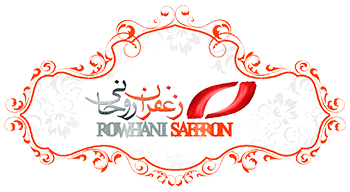Production of 94% of the world’s saffron in Iran
Secretary of the Medicinal Plants Technologies Development Headquarters said: 94% of the world’s saffron is cultivated in Iran and is the only competitor of Iran in this field with 800 thousand hectares, which is due to the fact that some of the active ingredients of this plant are not produced in this country. Has stopped the plant.
Medicinal plants are plants that contain one or more of the active ingredients. According to statistics, there are about 8,000 species of plants in Iran, of which 2,300 species are aromatic and medicinal plants.
With today’s cultures, attention to traditional medicine and herbs has increased, Mohammad Hassan Asareh, Secretary of the Headquarters for the Development of Medicinal Plants and Traditional Medicine, stated that in the second decade of the revolution, only 138 items of herbal medicine were registered in the official list of the Ministry of Health, which increased to 938 in 2012. The number of medicine pens has reached and this number has increased in this list until August 2016 with a growth of 100% to 1713 pens of herbal medicine.
He considered the number of medicines and products of traditional medicine from 121 items to the end of 2012 to 746 to August 1995 and stated: the per capita share of herbal medicines in pharmacies has increased from 1.5% to 4%, while the area under cultivation of some Medicinal plants in the last 4 years, including saffron, mint and umbrella family, barberry and rosemary have increased from 128 thousand hectares with more than 40% growth to 181 thousand hectares.
Asareh stated that in the past, exports in this area were in the form of raw sales of medicinal plants.: According to statistics, before the revolution, the amount of exports of raw materials for medicinal plants varied depending on the drought and wet season, so that in some We have exported $ 70 million to $ 80 million in the 1980s and some $ 180 million in some years, but according to current policies, that is less than $ 80 million.
He mentioned the reason for this as preventing the sale of raw materials in medicinal plants and enforcing laws in the field of restricting the harvest of endemic plants of the country’s ecosystem and continued: with the implementation of laws related to restricting the harvest of endangered medicinal plants in the country We have reduced 100,000 hectares of harvests from endangered plants, and this number should reach 800,000 hectares, according to upstream documents.
According to him, the export of licorice plant was in the form of raw sale, the harvest of which was banned, and according to estimates, we have exported 35 to 40 million dollars of licorice products so far.
The Secretary of the Medicinal Plants Science and Technology Development Headquarters continued: Iran is the fifth country in the field of export of medicinal plants, which is after China, India, Korea and Turkey.
Development of the cultivation of the king of medicinal plants
The Secretary of Saffron Medicinal Plants Technology Development Headquarters described the king of Iranian medicinal plants and reminded: considering that this plant is a water-deficient plant, so we started to develop saffron cultivation in the country so that the following level Cultivation of this plant has increased from 77,300 hectares in 1391 to 96,000 hectares in 1394.
We have been able to export some saffron products for $ 8 million for the first time in recent years, he said, stressing the need for quantitative and qualitative development of saffron cultivation.
According to him, 94% of the world’s saffron is cultivated in Iran, and in the past, Spain had cultivated this crop with 800,000 hectares, but because some of the active ingredients of this plant were not created in Spain, the cultivation of this plant was stopped.
The extract reminded: from this drug, the active ingredient of Alzheimer’s drug is extracted.







Get Social